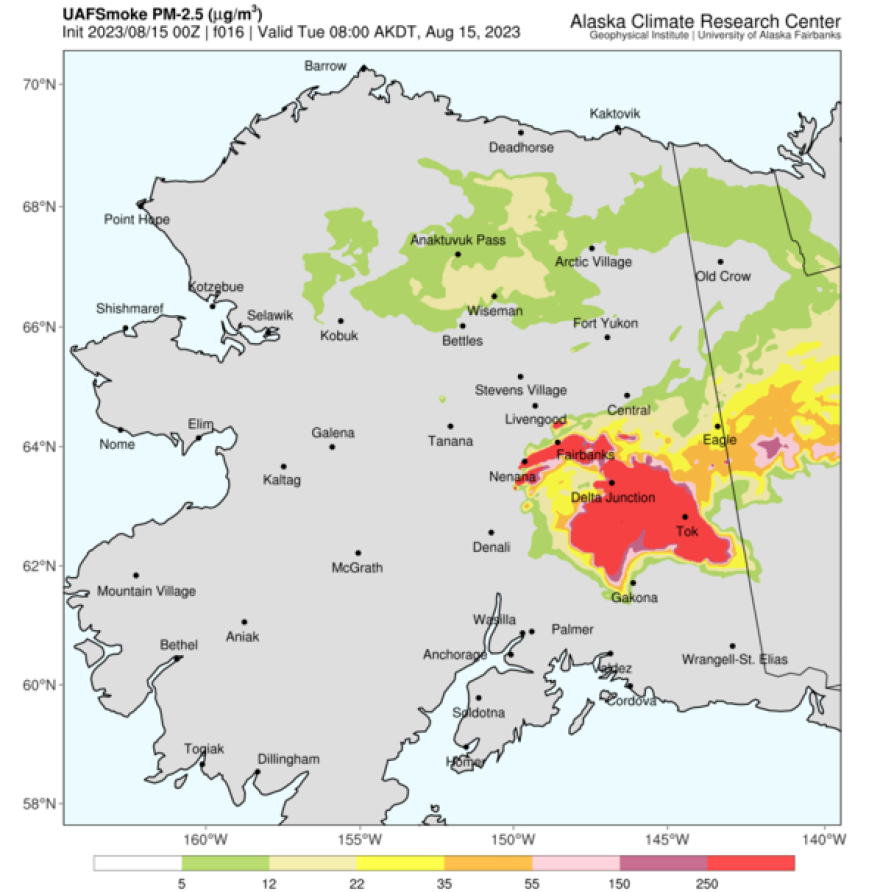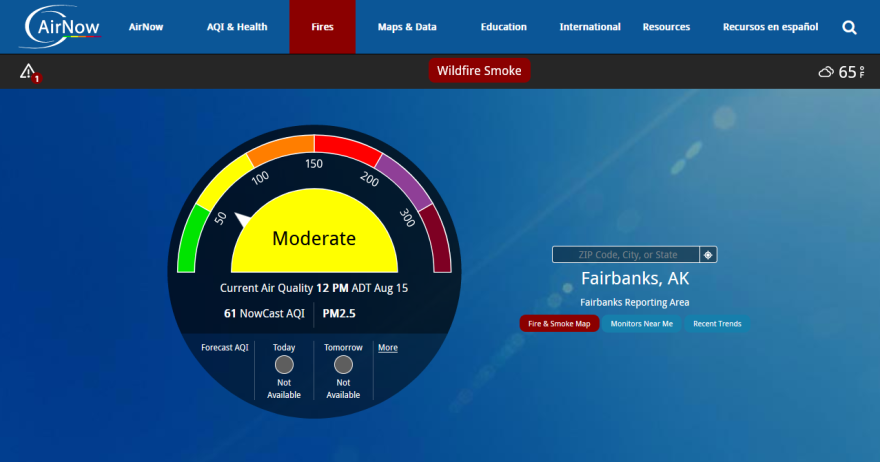‘A success’: Public shows interest in online smoke, air-quality advisories after surge of lightning-caused fires
State and federal firefighting agencies have been providing reports on smoke around the Interior kicked up by wildfires over the past few weeks. Agency officials say the public has shown a lot of interest in the reports, so they may become a regular feature during especially smoky fire seasons in Alaska.
Seth Morphis is a federal Forest Service air-resources adviser from Montana who’s been compiling reports on the smoke we’ve all been putting up with since late last month, when dry-lightning thunderstorms rolled through the Interior, sparking dozens of wildfires. He says firefighting agencies brought him up here when smoke from the surge in wildfires began to blanket the eastern Interior. His job is to provide 48-hour smoke forecasts for the agencies and the public, focusing on “the potential smoke impact -- where and when and how bad,” he said.
Morphis’s reports have been posted to the akwildfire.com website and one maintained by Alaska Interagency Coordinating Center. They’ve also been uploaded onto social-media sites to make them available to a broader cross-section of the public. BLM Alaska Fire Service spokesperson Al Nash says the response shows the public is interested.
“I haven’t looked at the analytics,” Nash said in an interview Tuesday. “I can tell you that I know that the word got out and that it worked, because the number of phone calls we were receiving about smoke and air quality diminished.”
Morphis says he’ll be leaving his temporary post today, because he like all fire-agency employees is required to rotate out of temporary assignments after two weeks. Nash says he thinks it’s unlikely that Morphis will be replaced this year by another air-quality adviser, because the fire season seems to be slowing down.
“Our air quality is improving, due to decreased fire activity,” he said, “and the forecast suggests that we are nearing the end of this period of significant fire activity.”
Fairbanks National Weather Service meteorologist Adam Gill agrees. And he says that’s why the Fairbanks forecast for later this week does not include a mention of smoke.
“It does look like a lot of the fires,” he said, “at least surrounding Fairbanks here, is really calming down.”
Gill says that doesn’t mean the fire season is over. But he says cooler temperatures and rain through this week is likely to slow the growth of fires and tamp down the amount of smoke they produce.
“At least based off of the weather forecasts we’re seeing here,” he added, “it’s not looking like fire activity is going to be picking up too much, in order to bring back a whole lot of smoke.”
Morphis says that's good news, because the smoke can pose a health risk to the public and firefighters.
"I'm not a doctor, but I'd just encourage folks who have pre-existing conditions like respiratory or pulmonary issues to reduce their exposure to the smoke."
Nash says the public’s interest in the smoke reports suggests officials with the state and federal agencies that brought Morphis up here this year may be inclined to offer the reports again during the next exceptionally smoky fire season.
“I think fire managers would see the use of the air-quality forecasts as a success,” he said. “It’s hard to predict what might be needed next season, but certainly they would seriously consider in the future, if faced with significant smoke impacts.”
You can find out more about wildfire-smoke forecasting by going to the federal Interagency Wildland Fire Air Quality Response Program website at wildlandfiresmoke.net.





